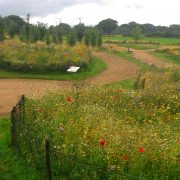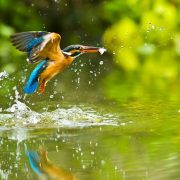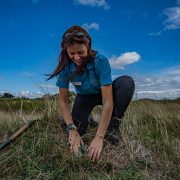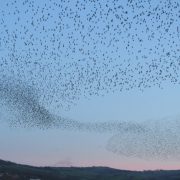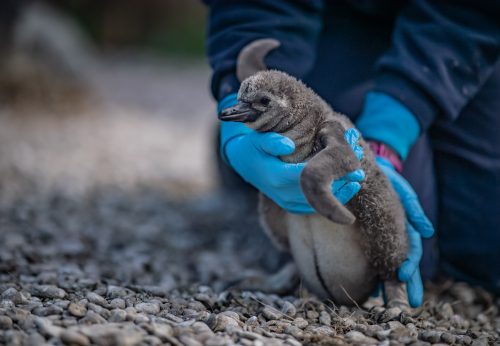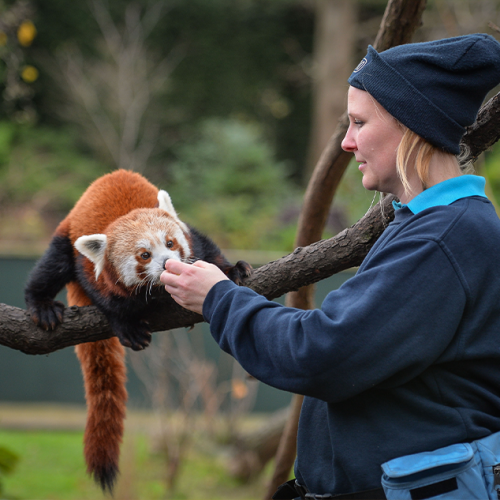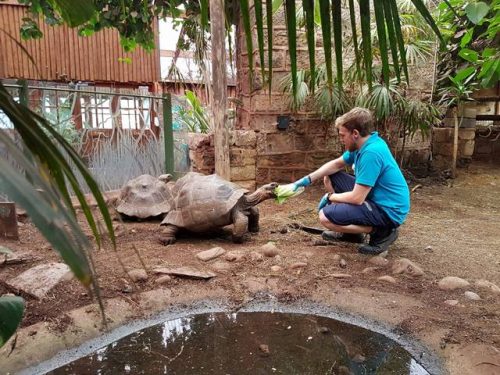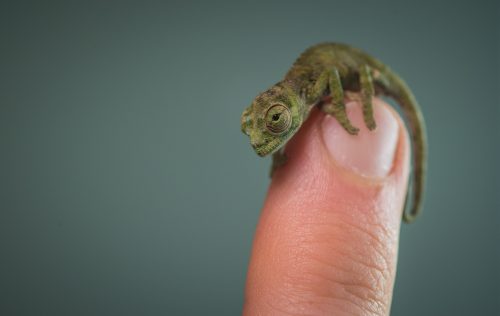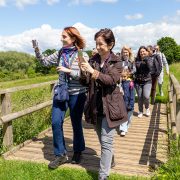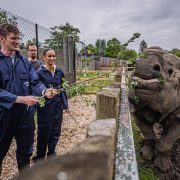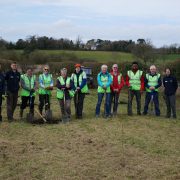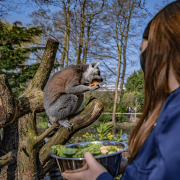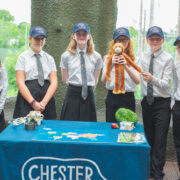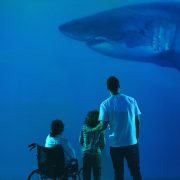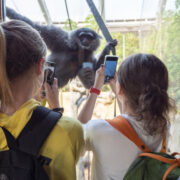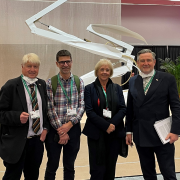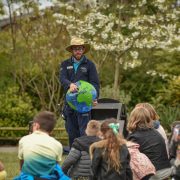The race is on to save our planet.
Our forests are falling silent, oceans are emptying, and wildlife are struggling. But it’s not too late to reverse this — we’re fighting back and there’s a global plan to get us back on track.
The Kunming-Montreal biodiversity package
Just last year, 186 countries adopted a new landmark agreement to set us on a path to live in harmony with nature by 2050: the Kunming-Montreal biodiversity package. But, how are zoos and aquariums supporting this global, visionary mission and helping in the last-minute sprint to protect our precious natural world?
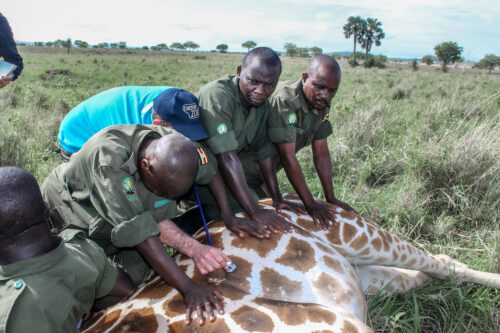
In our latest scientific paper, we worked with the United Nations Environment Programme-World Conservation Monitoring Centre (UNEP-WCMC) to outline exactly how.
Matea Vukelić | Programme Officer, UNEP-WCMC
“Modern conservation zoos and aquariums are key hubs for biodiversity conservation in the 21st Century. The Kunming-Montreal Global Biodiversity Framework and related package of decisions call for a ‘whole of society’ approach, and these institutions are vital conservation players.”
“Partnering with national governments and enhancing collaboration can ensure the recognition and accountability of zoos’ and aquariums’ efforts, and together, all stakeholders can amplify our collective efforts towards living in harmony with nature by 2050.”
One key part of this biodiversity package is the Global Biodiversity Framework (GBF), which is made up of different Goals and 23 Targets that provide a roadmap for action. While there are many of these that we can and are already contributing to, there’s several in particular where modern conservation zoos like ours already shine.
Goal A
This Goal is a big one for zoos and aquariums, as it focuses on preventing extinction, reducing threats to ecosystems and species, and maintaining genetic diversity within populations.
Preventing Extinction is in our DNA, and it’s across everything we do each and every day: whether it’s saving critically endangered skinks and snails on behalf of the Bermudan government (just 3 of the over 3,000 species we look after globally), protecting rainforests and orangutans in Indonesia by supporting sustainable palm oil, working with nuns to safeguard rare salamanders in Mexico, or replanting endemic species right here in the UK, modern conservation zoos and aquariums are contributing to this Goal in a gigantic way.
Preventing extinction in Bermuda
Once thought to be extinct in Bermuda until recent chance discoveries, we’ve worked closely with the Bermudan Government to bring two species of snail back from the brink of extinction, releasing over 110,000 Greater and Lesser Bermuda land snails back into Bermuda — perhaps the world’s largest ever reintroduction!
Rainforest and orangutans in Borneo
We’ve been fighting to protect rainforests and orangutans in Borneo for over 22 years, and help people to support this mission by only buying products with sustainable palm oil in.
Salamanders in Mexico
With less than 100 Lake Pátzcuaro salamanders left in the wild, we’re working with our conservation partners in Mexico, including a convent of nuns, to safeguard this critically endangered amphibian before it’s too late.
Target 3: conserving important habitats
This Target aims to protect 30% of terrestrial and aquatic habitats by 2030. Some zoos even have their own reserves, such as our Networks for Nature project, and are actively involved in managing and rewilding areas around the world while supporting local communities and promoting a connection with nature.
Target 4: management to prevent extinction
Target 4 is HUGE for zoos as it brings ex-situ conservation (where animals are protected under human care) into the spotlight. We play a critical role in managing populations and ensuring the survival of endangered species. From the California condor to Bermuda snails and golden lion tamarin, zoos have successfully cared for and safeguarded at least 17 species that would have otherwise vanished from the face of the Earth.
We’re even taking this to the next level by preserving species’ DNA through cryopreservation and seedbanks, adding a further safety net against extinction. This target also includes efforts to reduce conflict with wildlife, such as our new Darwin project that’s working towards human-carnivore coexistence in the foothills of the Himalayas.
Cryopreservation
Our conservationists are freezing tissue samples of the world’s rarest animals as part of the Nature’s SAFE initiative: one of Europe’s largest living biobanks.
Human-carnivore co-existence
We’ve been working alongside communities and partners in India to try reduce conflicts between tigers and leopards and the people that share their home.
Target 12: connection to nature
Zoos like ours provide immersive nature experiences that allow people to see and connect with unique species they may never otherwise have the privilege to, especially for people living in cities. From feeding greater one-horned rhino to being dazzled by the ancient calls of silvery gibbons and awed by the sheer size of a reticulated python, these doses of nature are known to have a range of benefits for us, including reducing stress and anxiety. More than that, many zoos also engage in community rewilding initiatives, such as our Networks for Nature project, which increase local biodiversity and help to reconnect people with the natural world.
Dr Andy Moss | Lead Conservation Scientist in Social Science, Chester Zoo
“Modern aquariums and zoos should be proud of the work we’re doing because much of it aligns with the goals and targets of the GBF: we’re conservation powerhouses that are not only saving species from extinction and supporting livelihoods across the world, but are also inspiring and empowering millions to act for wildlife. In fact, there’s over 700 million visits to zoos each year.”
“By better integrating and aligning with efforts on a national level, we can further improve the recognition of our valuable contributions within these global goals.”
Target 16: behaviour change
Working to empower action for nature has become a huge aim of modern zoos worldwide. With hundreds of millions of people from all walks of life visiting zoos and aquariums each year, we’re prime locations for engaging people in conservation issues and supporting this Target. Whether it’s providing information on how and why to support sustainable commodities like palm oil and coffee or advocating for policies that protect nature, we’re trusted voices that can inspire real change.
Our new paper also mentions how zoos and aquariums can further enhance their conservation impact and reputation by continuing to align with and support international conservation policies, and the GBF provides the perfect opportunity for this.
So, by better championing and linking our own conservation efforts with those at a national level and by continuing to work closely with governments and international organizations, we can make sure our impacts are recognised in the global picture and provide a much-needed boost in the race to save our natural world.
OUR TEAM OF EXPERTS WORK IN SIX REGIONS AROUND THE GLOBE – REPRESENTING SOME OF THE PLANET’S MOST BIODIVERSE HABITATS. Discover more about our SCIENCE AND CONSERVATION work.
